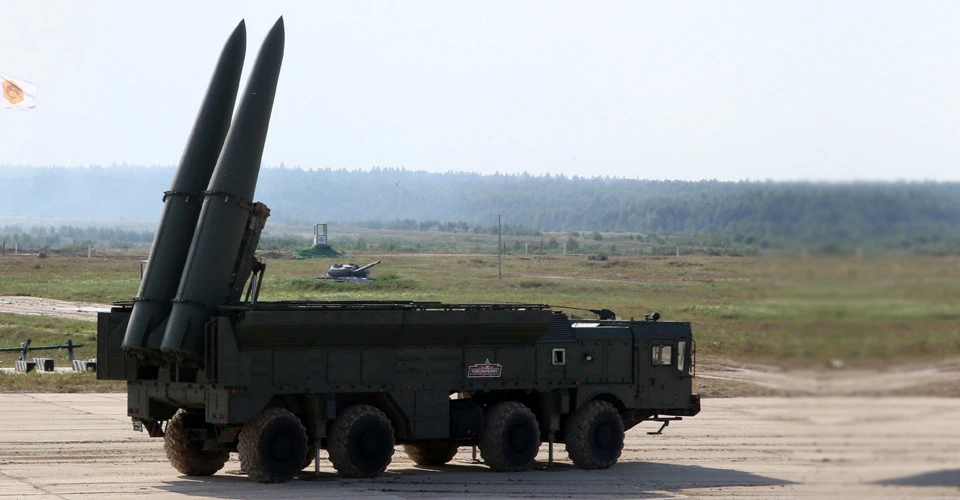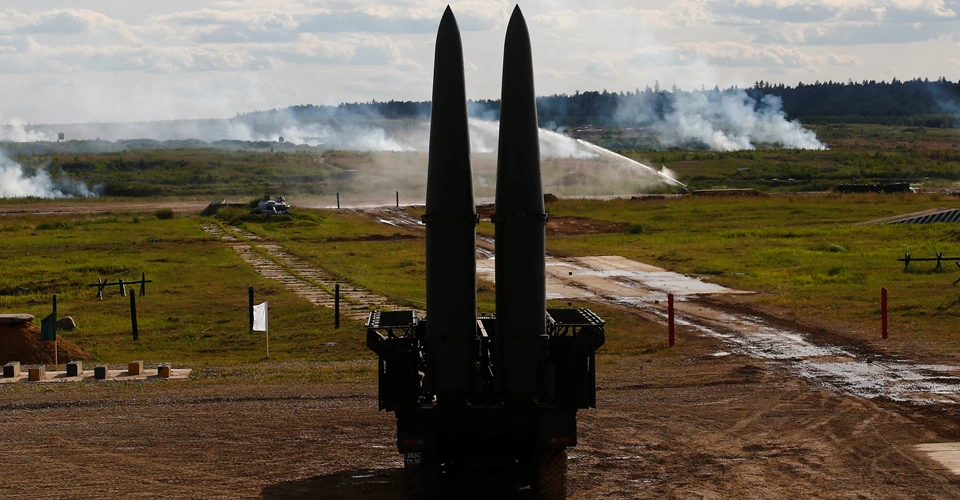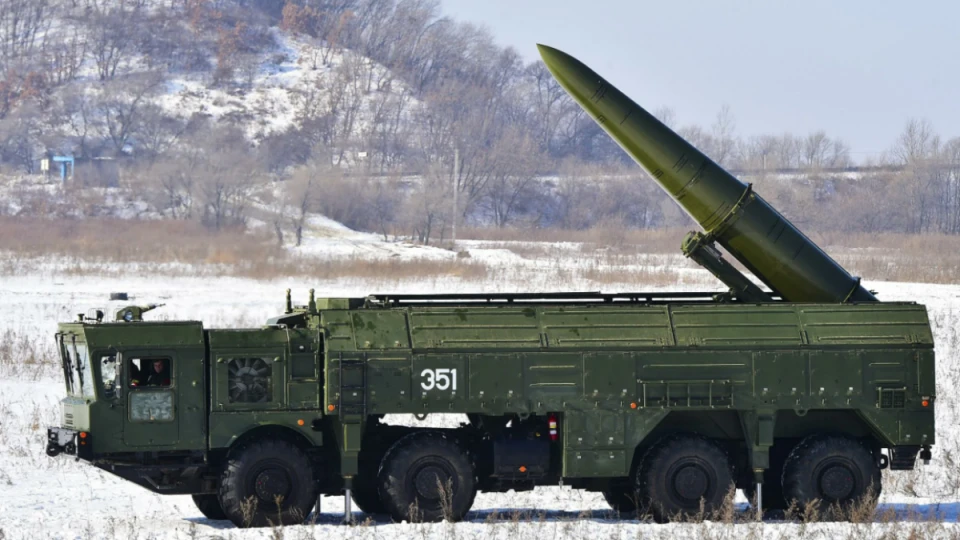
Iskander missiles: what effect they have on war in Ukraine, features and characteristics
In 2014, Moscow held rallies. Due to deteriorating relations with the West amid the aggression against Ukraine, Russians were encouraged to trade Western-made clothes for T-shirts with the slogan "Don't make fun of my Iskanders". For Russia, the Iskander symbolized the invincible might of Russian weapons
Espreso will share whether Iskanders are a superweapon or a myth of Russian propaganda, what are the technical characteristics of this weapon and how the Ukrainian Armed Forces are fighting it.
Here is a brief summary of what will be in the text:
- What are Iskanders and how they were created
- Iskander missile system: composition and combat characteristics
- As for the missiles, their main combat characteristics are as follows
- Where and how Iskanders were used
- Iskander missile system - a superweapon or a myth of Russian propaganda
What are Iskanders and how they were created
Iskander missiles have a surface-to-surface tactical missile system developed at the Kolomna Machine Building Design Bureau (Moscow Region). The name of the system is an eastern version of the name of Alexander the Great. Iskander was first introduced in August 1999. The maximum range of ballistic missiles fired by the Iskander-M is at least 500 km (publicly announced) and can reach 700 km (according to expert estimates, if a nuclear warhead or a lightweight conventional warhead is used). There is also a modification for launching 9M729 cruise missiles with a maximum range of up to 2500 km. It violates the terms of the Intermediate-Range Nuclear Forces Treaty.
The Iskander is designed to hit targets deep in the operational territory of enemy forces. In addition to firepower (missile systems, multiple launch rocket systems, long-range artillery), the most likely targets for the system are strategic targets, such as missile and air defence systems, aircraft and helicopters at airfields, command posts and critical civilian infrastructure. Such objects are usually protected from attacks by air defence systems, so Iskander was developed with the expectation that missiles would need to pass through the "protective umbrella".

Photo: gettyimages
As for the munitions, Defence Express calls Iskander-K essentially a generic name for the cruise missiles that Russians can use as part of the Iskander system: 9M728 (also known as P-500) with a range of up to 500 km and 9M729 with a range of up to 1500 km. Both types of missiles have a warhead weighing up to 480 kg and a subsonic flight speed of up to 900 km/h.
Iskander missile system: composition and combat characteristics
In total, the Iskander missile system consists of 6 vehicles. The self-propelled launcher weighs 42 tonnes and can travel at a speed of 70 km/h on a highway and 40 km/h on a dirt road.) The transport and reloading vehicle transports 2 missiles, reloading takes 15 minutes. A command and control vehicle equipped with a radio station, which is used to control fire and communicate with other units. It can take up to 30 minutes to deploy and dismount the headquarters, which experts say is a long time for intense combat operations. The complex also includes a maintenance vehicle, an information preparation point and a life support vehicle (for accommodation, rest and food). The entire OTRC is manned by at least 13 people, and 6 vehicles require camouflage, as they are quite visible on the roads, which allows enemy intelligence to detect Iskanders on the move.

Photo: gettyimages
The Iskander is equipped with three main types of warheads. The cluster warhead is used to destroy targets in the open and equipment in trenches, with 54 warheads remotely detonated in the air. A high-explosive fragmentation warhead is used to destroy point targets, and a concrete-piercing warhead is designed to destroy bunkers. There are also "special" warheads with weapons of mass destruction, including a nuclear charge with a yield of up to 50 kilotons. This is more than the total yield of the two nuclear bombs dropped on Japan in 1945.
As for the missiles, their main combat characteristics are as follows:
- The launch weight of the missile is 3,800 kg,
- Warhead weight - 480 kg,
- Length - 7.2 m,
- Diameter - 92 cm,
- Missile speed after the initial trajectory is 7,500 km/h,
- The minimum range of the target is 50 km;
- Approach time to the minimum range - 23 seconds,
- The maximum range of the target is 500 km,
- Approach time to the maximum range - 500 km: 4 min,
- Service life - 10 years (including 3 years in the field)
Where and how Iskanders were used
Iskanders were first used in wartime in 2008, during the Russian aggression against Georgia. Georgians claimed that the Russians used Iskander to shell the city of Gori, killing several civilians and a journalist from the Danish television company RTL.
Iskander systems have been spotted in Syria. There, Russians shelled civilian targets, including a hospital in the city of Azaz.
Armenia became the first foreign operator of the complex in the export modification (with the range of the Iskander-E missile reduced to 280 km). In 2016, Yerevan received 4-8 OTRKs. In 2020, the Azerbaijani military claimed that Armenia was actively using Iskanders, but none of the missiles allegedly hit the target. Armenian Prime Minister Nikol Pashinyan confirmed the use of Iskanders and criticised them. He noted that the missiles fired "did not explode or exploded, for example, by 10 per cent".
As for Ukraine, the Russian forces started using Iskander immediately after the large-scale invasion. It was these systems that struck Ukrainian airfields on 24 February 2022 and attacked the airport in Zhytomyr on 27 February.
Prosecutor General Venediktova reported that Russian forces used Iskanders and shrapnel shells in Irpin, damaging 70% of the city.
On 10 March 2022, Ukrainian defenders destroyed an Iskander-M division in the Chernihiv sector. The Iskander division includes four launchers for eight ballistic missiles.
On the morning of 27 May 2022, an Iskander-K cruise missile fired from the Rostov region hit a National Guard barracks in the Dnipro region. At least 10 people were killed and dozens more were injured. Other strikes include the attack on Sloviansk, where three people were reported dead, the attack on Pervomaiske in Kharkiv region (43 people were injured, 12 of them children), and the shelling of Pokrovsk and Kramatorsk in Donetsk region, where there were fatalities.

Photo: wikipedia
Iskander missile system - a superweapon or a myth of Russian propaganda
In March 2022, The New York Times reported, citing US intelligence, that the Iskander-M ballistic missiles fired by the Russian forces at Ukraine have decoys that can deceive air defence radars and heat-seeking missiles. Each of these devices is 30 cm long and shaped like a white cylinder with an orange tail. The decoy is packed with electronics and emits radio signals that jam radars, as well as a heat source to intercept missiles.
Missiles fired by Iskander are a difficult target. After launch, the ballistic missile quickly gains altitude. Most of the way along the ballistic trajectory, it flies at an altitude of 50 km, then descends to 20 km and heads vertically downwards. Along the way, the missile manoeuvres and creates false targets for air defences. At the end of its active acceleration, the ballistic missile reaches a speed of 2 km/sec.
As a result, the Russian Ministry of Defence and the media have presented Iskanders as a weapon against which there is no countermeasure.
"The Russian media also claimed, citing 'Western military experts' (often fictitious or distorted), that a massive Iskander attack could quickly decide the outcome of a local war by destroying the enemy's air defence system, after which Russian aviation would finish the job. And Russian "military analysts" predicted that a salvo from an Iskander division could destroy an entire US missile defence area," the BBC article says.
For some time, Ukrainian air defences were indeed unable to shoot down Iskander-M ballistic missiles. However, this circumstance did not help the Russian forces achieve their strategic goals - neither to destroy air defences or aviation, nor to capture Kyiv, nor to win the war. Everything changed when the Ukrainian Armed Forces received Patriot systems.
"Russia was escalating the situation through the media and trying to convey to its population and the world that its ballistic missiles, such as the Kinzhal and Iskander missiles, could penetrate missile defences. This belief is ingrained in the minds of Russians and its political elite. In principle, our Western partners have also begun to believe that this is a dangerous weapon. Ukraine has destroyed the propaganda myth," another Defence Express expert, Anton Mikhnenko, explained on Espreso.tv. (14:11)
Another military analyst, retired colonel and expert at the Centre for Defence Strategies, Viktor Kevliuk, emphasises that the second part of the trajectory (attack) is a parabola, which is easily calculated by radar, allowing an interceptor missile to be aimed at it.
"It's also worth remembering that OTRKs are purely offensive, designed for the use of nuclear weapons, their effectiveness in non-nuclear weapons is lower, a missile with a lighter non-nuclear warhead can only fly 300 km. This weapon starts a war, but does not end it," Kevliuk writes.
The observer also names other disadvantages of the Iskander: it is expensive, requires intelligence from airborne reconnaissance assets, which is impossible to fully achieve without air dominance. In addition, the missiles do not hit moving targets. Kevliuk considers Iskanders "just a good weapon" and their "superpowers" a Russian show.
In addition, the Russian forces have a limited number of ballistic missiles for Iskanders. As of the beginning of the year, experts spoke of 52 missiles. It is also not easy for Russian invaders to replenish their stocks. After the full-scale invasion and until the end of 2022, the Russian military-industrial complex was able to produce only 20 missiles, an average of two per month.
-
As of 10 September 2023, Russia has deployed 46 Iskander missile launchers along the border to attack Ukrainian settlements.
- News














































